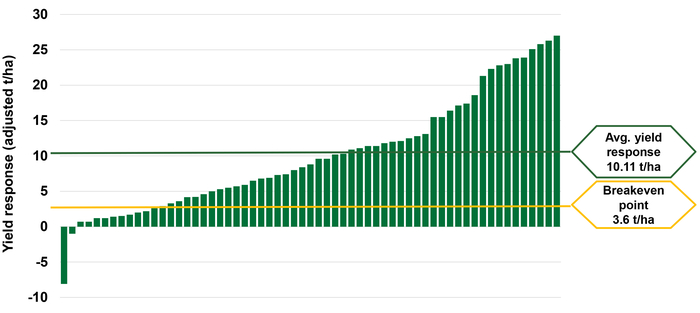Growers will need to monitor sugar beet crops closely for signs of disease and remain alert to the possibility of early disease onset. While rust (Uromyces betae) has been the principal disease to threaten crops in recent seasons, the dry and warm weather experienced in May and early June means powdery mildew (Erysiphe betae) is real threat to crops.
“Application timing is crucial to protecting yield potential. Crops are best protected by applying fungicides at disease onset, but with conditions favourable growers should be inspecting crops closely,” explains Jack Hill, Bayer commercial manager for root crops and horticulture.
Last year, in contrast, disease was later to arrive with rust first being found in late July. But trials results indicate that pressure was severe with the yield difference between treated and untreated crops was significantly greater than the long-term average.
“October-lifted crops that received an application of Escolta (cyproconazole + trifloxystrobin) at disease onset with a second spray four week later yielded 18t/ha more than the untreated, an increase of about 19%, while the February-lifted crops yielded 22t/ha more than the untreated, an increase of 25%. This is an exceptional level of yield protection and is above the long-term average yield response seen in trials,” said Mr Hill.





